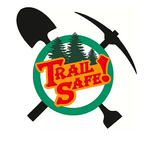Trail Safe Lesson 8 - Communications & Assertiveness
Trail Competencies
-
Crew Management
-
Summary
Communication service communication makes the operational leadership process work.
Overview
TRAIL SAFE! is a unique safety training program designed specifically for National Park Service (NPS) Trail Volunteers but is useful to everyone! It's based upon NPS Operational Leadership Training, where the Human Factor of safety is explored. Trail Safe! captures the core learning objectives of the 16 hour Operational Leadership course while allowing volunteers to learn from their own homes on-line.
The Trail Safe! series is found below in eight video lessons, each ranging in length from 18 to 40 minutes long. Viewing the entire eight lesson series will take approximately three hours. Watch them over the course of multiple days, or "binge watch" the entire series in three hours—it's up to you—but please watch them in numeric order from Lesson 1 through Lesson 8.Lesson 8
Communication service communication makes the operational leadership process work. This lesson links all the previous lessons together. It will allow you to work more effectively.
Our objectives in Lesson 8 are to describe the difference between passive aggressive and assertive behavior. Prepare and use an assertive statement prepare and present an effective briefing and prepare and present an effective debriefing or after action review.
Communication is the process of exchanging ideas through a common system of verbal and nonverbal symbols. Think for a moment about all the different ways you communicate with your fellow trail volunteers. Certainly there is face to face verbal communication during meetings and work events. Often we share written communication in the form of volunteer newsletters and emails about upcoming trail projects. Volunteers also communicate by phone texting and sometimes radio transmissions in the field. Even the blazes we paint on the trees and the trail signage we install our forms of communication. Even with all the forms of communication we have available to us. Information can still be incomplete or misinterpreted. Studies show that words alone such as text or emails account for only 7 percent of a person's ability to fully understand a message. Vocal tone such as during a telephone conversation contributes another 38 percent to our overall understanding of what is being communicated to us. Believe it or not Body Language accounts for a full 55 percent of how we interpret information being presented to us in other words.
Trail Types Covered
General. All trail types are relevant.
-
| Publisher | National Park Service |
|---|
This link will take you away from TrailSkills.org. Please report broken links to us.
726 people have viewed this resource

